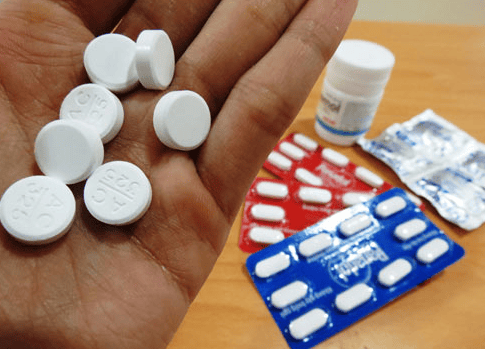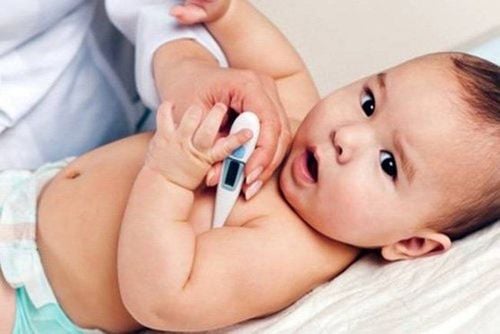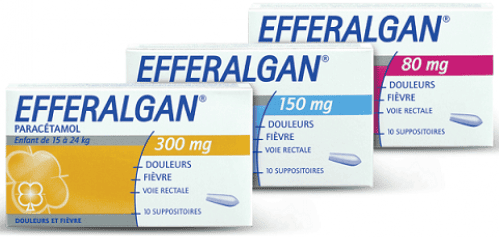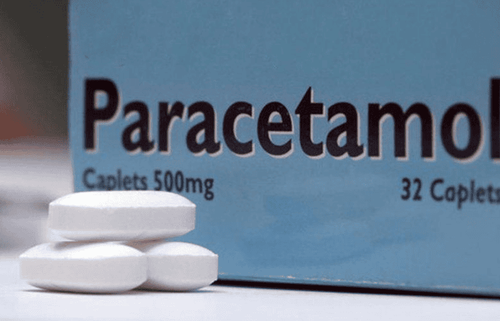This is an automatically translated article.
The article was written by Dr. BS Phung Tuyet Lan - Head of Pediatric Inpatient Unit 3, Children's Center - Vinmec Times City International Hospital.Fever is a normal biological response of the body to many factors, the most common of which is an infection. Fever occurs when the body temperature rises as a result of the body's temperature set point being readjusted higher than normal.
1. How to measure a child's temperature when he has a fever
All children can have a fever at any time. Parents' worry is how to know when to take their child to the doctor.
Body temperature can change depending on many factors: age, circadian rhythm, body condition (pregnancy) and temperature measurement location (mouth, armpit, ear, forehead, anus). A fever is generally a temperature of 38 degrees Celsius (100.4 degrees Fahrenheit) or higher. Taking a baby's temperature under the armpit, ear, or forehead is more convenient but less accurate than a temperature taken under the armpit or anus.
Infection is the most common cause of fever, which can be viral or bacterial. Common diseases with fever in children include: colds, gastrointestinal infections, ear, nose and throat infections, laryngitis, bronchiolitis, urinary tract infections. There is very little scientific evidence to support the notion that fever is caused by teething, and if a child's temperature is above 38.9 degrees, other causes need to be considered. Wearing a lot of clothes and blankets for babies under 3 months can also raise the temperature, but if the anal temperature is above 38.5 degrees Celsius (101 degrees Fahrenheit), it is necessary to find the cause. Some vaccines, when given, can also cause fever in children.
The best method of taking your baby's temperature depends on several factors. Taking an rectal temperature is the most accurate. Oral temperature measurement is also a standard practice in older children 4 or 5 years of age. Measuring temperature in the armpit, ear or forehead is less accurate but is the initial method of assessing temperature, if it is higher than 37.2 degrees Celsius, it is necessary to follow up with anal or oral temperature measurement depending on each case.
There are views for and against fever treatment. On the one hand, fever plays a certain role in fighting infection, on the other hand, it also causes discomfort in children. The degree of fever is not always the best indicator to decide on treatment or testing for a child, it is more important to observe the child's manifestations and evaluate the child's condition. Fever may be accompanied by a number of other signs, including warning signs that need to be taken to the hospital immediately, such as lethargy or irritability, inability to drink or breastfeed, vomiting, convulsions, headache. , bulging fontanelle, difficulty breathing, cyanosis of lips and extremities...
In most cases, children with fever can be monitored and/or treated at home. However, it is important that parents can keep a close eye on their child and know when to treat a fever and take the child to the doctor.
2. If a child has a fever, they need to be taken to the doctor
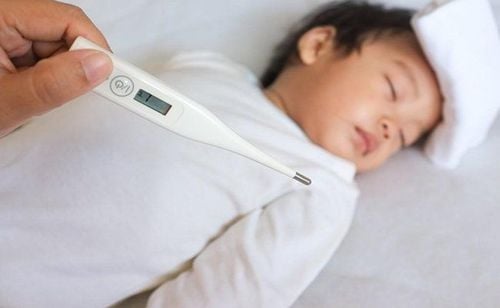
Trẻ dưới 3 tháng tuổi có nhiệt độ 38 độ C hoặc cao hơn
Children <3 months with an rectal temperature of 38 degrees C (100.4 degrees F) or higher, regardless of the systemic manifestations, do not give the child antipyretic before seeing a doctor Children from 3 months to 3 years old has an rectal temperature of 38 degrees Celsius or higher for more than 3 days, or has symptoms such as anorexia, fussiness, fatigue Children from 3 months to 3 years old have an rectal temperature of 38.9 degrees C or higher All children with a temperature anywhere of 40 degrees C or higher, or an axillary temperature of 39.4 degrees C or higher All children with febrile seizures All all children had fever again after 7 days, even if the fever lasted only a few hours All children had fever and rash All children had fever and comorbidities such as: cardiovascular disease, cancer cancer, lupus, sickle cell anemia Cases where treatment of fever with antipyretics is recommended: treatment of fever is recommended in children with comorbidities such as cardiovascular, pulmonary, brain, nervous system. Children with a history of febrile convulsions can be treated to reduce fever, although there is little evidence that antipyretics prevent convulsions. Antipyretic treatment may be helpful when the child is unwell.
Cases that do not require antipyretic treatment: in many cases, no antipyretic treatment is required for children. Children older than 3 months with a rectal temperature of 38.9 or lower and acting as normal do not require antipyretic therapy.
If parents are unsure about whether to give their child fever-reducing medication, consult a healthcare professional.
Treatment of fever can use drugs such as paracetamol or ibuprofen. This method can reduce the child's discomfort and reduce the temperature by 1-1.5 degrees Celsius. Paracetamol can be used every 4 to 6 hours, the dose is based on weight, children under 3 months need as directed by the doctor. doctor. Ibuprofen use every 6 hours, dose based on weight, children under 6 months need to be prescribed by a doctor. Routine dual-drug therapy is not recommended because the wrong dose may be given. Antipyretics are given only when needed and stopped when the fever has subsided or the child is no longer uncomfortable. It is necessary to strengthen children to drink water, eat liquid food and rest. Wipes are not as effective as medications and can make children more uncomfortable, so they are not recommended.
Fever is an abnormal increase in body temperature, a specific response to agents of which the most common is an infection, and is regulated and controlled by the central nervous system. The primary goal of treating a child with a fever is to improve the child's comfort rather than focusing on returning the body temperature to normal. Most cases of children with fever can be monitored and/or treated at home. Parents need to closely monitor the child's overall health to detect signs of risk and take the child to the doctor.
Customers can directly go to Vinmec Health system nationwide to visit or contact the hotline here for support.
SEE ALSO:
Classification and use of children's fever-reducing medicine How to measure body temperature when a child has a fever When must a child have a fever to take fever-reducing medicine?





